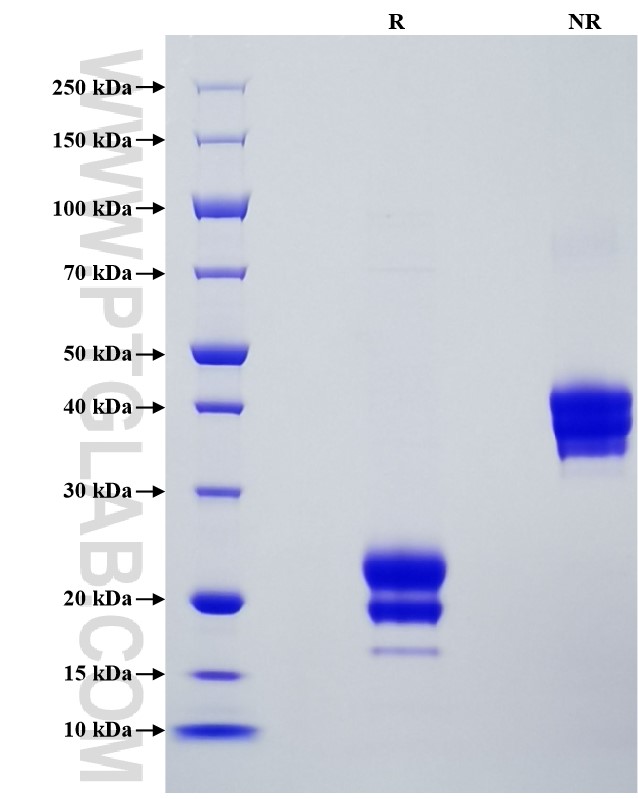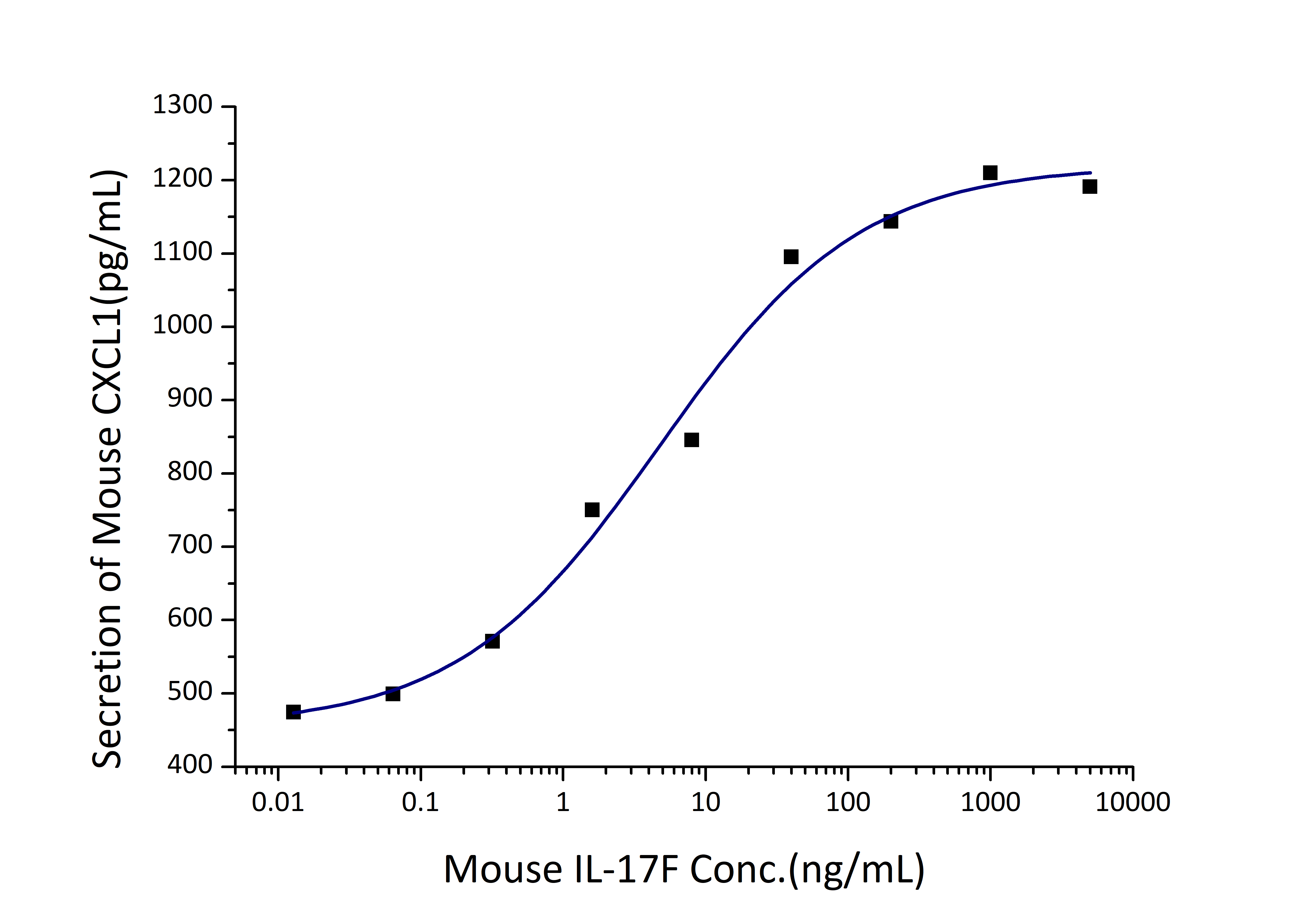Recombinant Mouse IL-17F protein (His Tag)
种属
Mouse
纯度
>90 %, SDS-PAGE
标签
His Tag
生物活性
EC50: 2-10 ng/mL
验证数据展示
产品信息
| 纯度 | >90 %, SDS-PAGE |
| 内毒素 | <0.1 EU/μg protein, LAL method |
| 生物活性 |
Measured by its ability to induce CXCL1 secretion by NIH-3T3 mouse embryonic fibroblast cells. The ED50 for this effect is 2-10 ng/mL. |
| 来源 | HEK293-derived Mouse IL-17F protein Arg29-Ala161 (Accession# Q7TNI7-1) with His tag at the C-terminus. |
| 基因ID | 257630 |
| 蛋白编号 | Q7TNI7-1 |
| 预测分子量 | 15.7 kDa |
| SDS-PAGE | 18-25 kDa, reducing (R) conditions |
| 组分 | Lyophilized from 0.22 μm filtered solution in PBS, pH 7.4. Normally 5% trehalose and 5% mannitol are added as protectants before lyophilization. |
| 复溶 | Briefly centrifuge the tube before opening. Reconstitute at 0.1-0.5 mg/mL in sterile water. |
| 储存条件 |
It is recommended that the protein be aliquoted for optimal storage. Avoid repeated freeze-thaw cycles.
|
| 运输条件 | The product is shipped at ambient temperature. Upon receipt, store it immediately at the recommended temperature. |
背景信息
The interleukin 17 (IL-17) family of cytokines contains 6 structurally related cytokines, IL-17A, IL-17B, IL-17C, IL-17D, IL-17E and IL-17F. IL-17 family plays crucial roles in host defense against microbial organisms and in the development of inflammatory diseases. IL-17A is a pro-inflammatory cytokine that also has the capacity to promote angiogenesis and osteoclastogenesis. IL-17F shares the highest homology with IL-17A and signals via a receptor composed by the IL-17RA and IL-17RC subunits. IL-17A and IL-17F can form IL-17A/A or IL-17F/F homodimers, IL-17A/F heterodimers are also formed. IL-17A and IL-17F, produced by the Th17 CD4(+) T cell lineage, have been linked to a variety of inflammatory and autoimmune conditions. IL-17F levels are elevated in sera and lesional psoriatic skin compared to non-lesional tissue. IL-17F also has been implicated in the development of neutrophilic airway inflammation.
参考文献:
1. Chunfang Gu, et al. (2013) Cytokine.64(2):477-85. 2. Seon Hee Chang, et al.(2009) Cytokine.46(1):7-11. 3. Askar M Akimzhanov, et al. (2021) J Biol Chem.282(9):5969-72. 4. Catherine Soderstrom, et al. (2017) AAPS J.19(4):1218-1222. 5. Jill F Wright, et al. (2008) J Immunol.181(4):2799-805.

